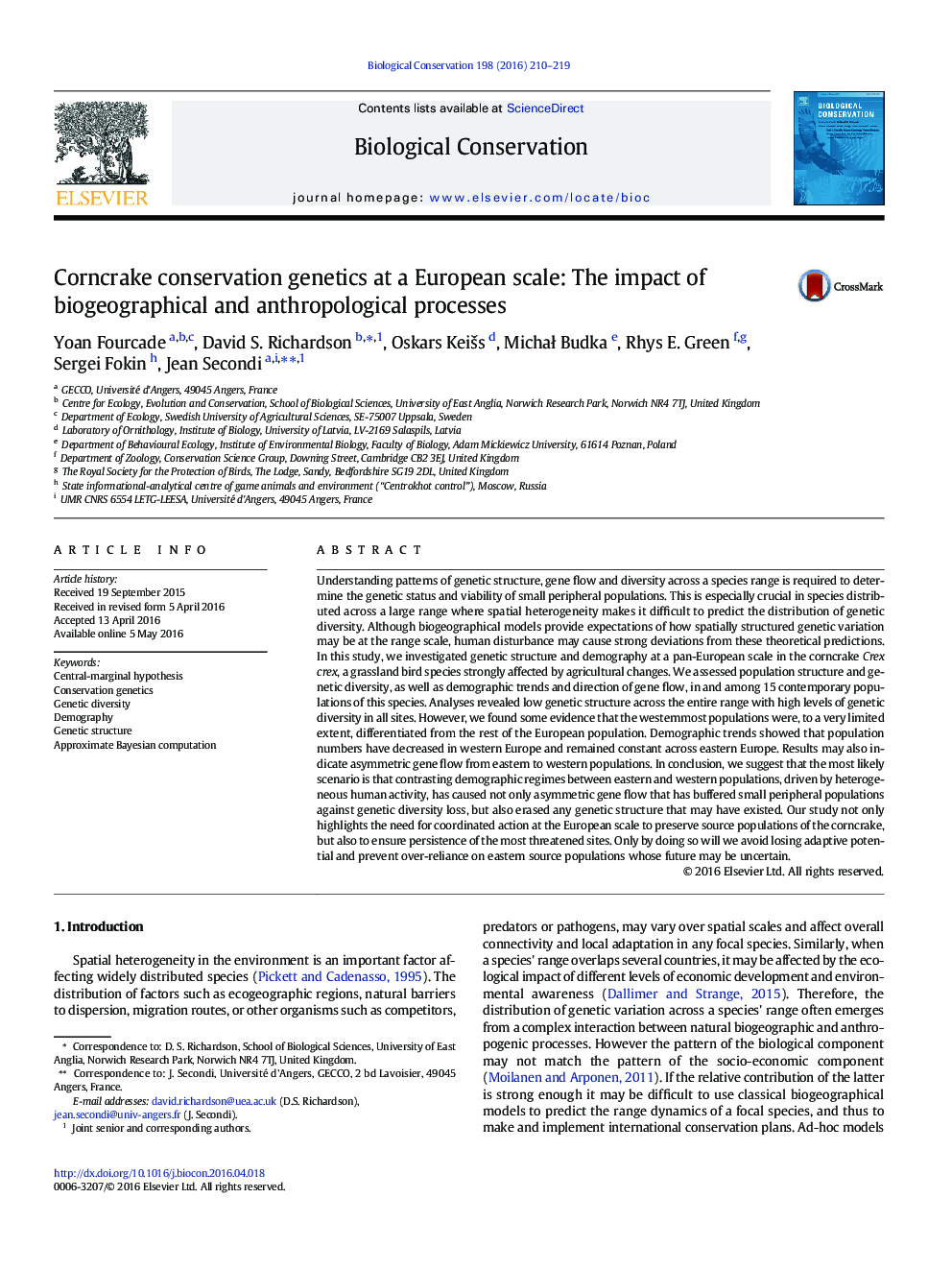| کد مقاله | کد نشریه | سال انتشار | مقاله انگلیسی | نسخه تمام متن |
|---|---|---|---|---|
| 4385028 | 1617903 | 2016 | 10 صفحه PDF | دانلود رایگان |
• Understanding range-scale genetic patterns is essential in conservation biology.
• Predictions of biogeographical models can be disturbed by human activity.
• In the corncrake Crex crex, we observed a low genetic structure at the European scale.
• Approximate Bayesian computation informed about gene flow and demographic trends.
• European-scale coordination is needed for efficient conservation of the corncrake.
Understanding patterns of genetic structure, gene flow and diversity across a species range is required to determine the genetic status and viability of small peripheral populations. This is especially crucial in species distributed across a large range where spatial heterogeneity makes it difficult to predict the distribution of genetic diversity. Although biogeographical models provide expectations of how spatially structured genetic variation may be at the range scale, human disturbance may cause strong deviations from these theoretical predictions. In this study, we investigated genetic structure and demography at a pan-European scale in the corncrake Crex crex, a grassland bird species strongly affected by agricultural changes. We assessed population structure and genetic diversity, as well as demographic trends and direction of gene flow, in and among 15 contemporary populations of this species. Analyses revealed low genetic structure across the entire range with high levels of genetic diversity in all sites. However, we found some evidence that the westernmost populations were, to a very limited extent, differentiated from the rest of the European population. Demographic trends showed that population numbers have decreased in western Europe and remained constant across eastern Europe. Results may also indicate asymmetric gene flow from eastern to western populations. In conclusion, we suggest that the most likely scenario is that contrasting demographic regimes between eastern and western populations, driven by heterogeneous human activity, has caused not only asymmetric gene flow that has buffered small peripheral populations against genetic diversity loss, but also erased any genetic structure that may have existed. Our study not only highlights the need for coordinated action at the European scale to preserve source populations of the corncrake, but also to ensure persistence of the most threatened sites. Only by doing so will we avoid losing adaptive potential and prevent over-reliance on eastern source populations whose future may be uncertain.
Journal: Biological Conservation - Volume 198, June 2016, Pages 210–219
